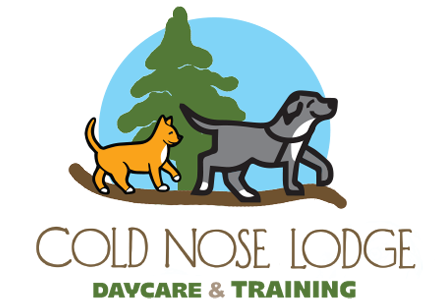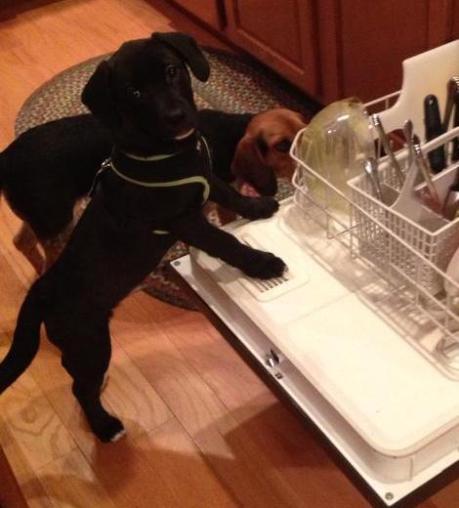Moving from new puppy bliss to reality
For those of you that adopted a new puppy over the holidays, there were moments of magic. Surprising the kids with a puppy on Christmas morning is a memory the entire family will cherish for years. The first night of getting up at 2am for a potty break isn’t even annoying. Now that you’ve had two weeks of mid-night outings, especially in the bitter cold, that magic may be waning a bit. Be sure to continue with your schedule though. A consistent schedule is so important for a young puppy. In the first four months of their lives, they are learning how the world works, learning what is expected of them from their families, and potentially learning some bad habits.
Two of the most common habits that puppies develop during this “I’m the cutest thing on earth and can get away with anything” phase are jumping and biting. Both behaviors are often unknowingly reinforced by people who think they are doing the right thing. Jumping puppies are rewarded with petting, and biting puppies are allowed to nibble on fingers, because they are teething.
Let’s take a step back and look at the reason why your puppy is jumping. The two biggest reasons for jumping on people:
- I want what you have.
- I want attention from you.
Here is a common scenario. A puppy sees as new person. He jumps up on that person’s legs to say hi. The person tells you they don’t mind the jumping. They gush about the cuteness of your puppy and pet him. That may be fine when your lab puppy weighs ten pounds. I’m sure the same people would have a totally different reaction when your full grown 100 pound lab jumps on them to say hi.
Teach your dog to sit to get attention. Ideally, he will sit before even attempting to jump. If he does jump though, you can take a step back and turn. Don’t say anything, and don’t make eye contact. As soon as your puppy has all four feet on the ground, turn back and encourage him to sit. You may then pet him, give him the treat, throw the ball, or whatever the goal was for the jumping in the first place.
With practice, you will teach your dog to sit to get what he wants. He will skip the attempts to jump and move right to the sit. Teaching a puppy to sit becomes the same as teaching a young child to say “please” when asking for something. In addition to being a polite thing to do, sit is the best thing a puppy can learn. If sitting, a puppy isn’t jumping, isn’t bouncing off the cabinets, etc.
The other common issue with young puppies is biting. Chewing on each other is normal for puppies. When one bites too hard, the other puppy yelps to let him know. Repeated occurrences of this behavior teaches a puppy bite inhibition. He learns it is ok to use teeth, but only to bite down lightly. With human skin, your puppy should learn that any biting at all is too hard. No contact between puppy teeth and human skin should be allowed. When you feel puppy teeth on your skin, yelp. This will startle your puppy. He will let go for a moment. This is your chance to substitute an appropriate chew toy. If your puppy continues to try to bite on you, yelp and walk away. Put a doorway between the two of you for a few seconds. Walk back into the room, and encourage your dog to play in an appropriate manner. Biting is usually a sign that your puppy wants to play with you. It is up to you to provide a proper outlet for energy.
If you need further help with biting, jumping, or any other puppy training issues, please contact our trainers at Cold Nose Lodge. These topics and more are covered in Puppy Kindergarten class. www.coldnoselodge.com/training_classes


